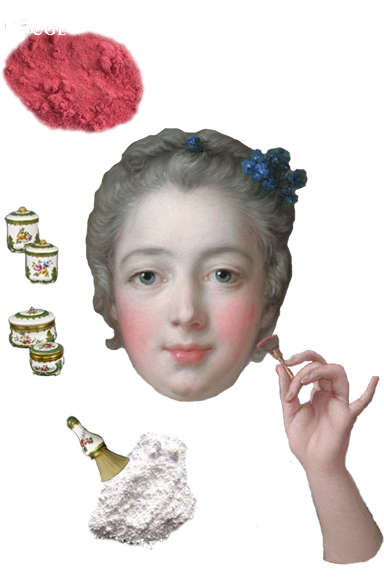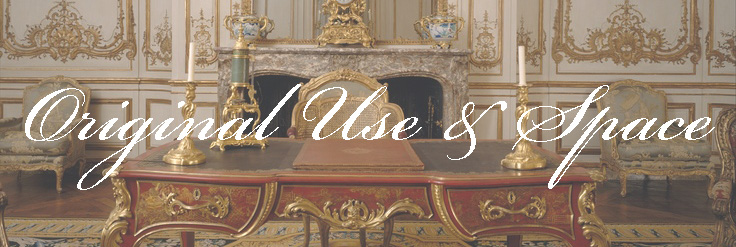
MAKEUP
Madame de Pompadour’s makeup consisted of a few key elements designed for powerful effect, the affirmation of aristocratic identity.
Le blanc, a white lead based powder known as Ceruse, was applied over the entire face. This was followed by several layers of a vermillion-based rouge applied to the most prominent park of the cheeks with a short-handled vergette brush to “enliven” the complexion. (Goodman-Soellner). The blanc and the rouge “constituted the extreme colors of the fashionable cosmetic palette throughout most of the 18th century” (Hyde). The more natural charms faded, the more heavily the paint was applied, masking an array of sins (Corson).

Composite image of the essential components of Madame de Pompadour’s makeup, le rouge and le blanc. Madame de Pompadour’s head and hand are extracted from the Francois Boucher painting of Jeanne-Antoinette Poisson, Marquise de Pompadour, ca. 1750. Porcelain tools and containers extracted from Manufacture de Sèvres, Toilet Service , ca. 1763. Images of vermillion and white lead powder retrieved from Wikipedia Commons. Composite image by Eugenie Pron.
This theatrical kind of face-painting instigated by Madame de Pompadour trickled down through french society, gaining immense popularity very quickly. By the mid-eighteenth century, “a rouge pot was an indispensable part of every woman’s dressing table,” diluting its power to express rank (Morag). Diderot, the enlightenment’s most vocal critic of cosmetic artifice, denounced rouge as the “terrible vermillion”, calling for women to adopt a more natural approach to their appearance (Hyde). Nontheless, Madame de Pompadour stood by her love of rouge. It is fabled that “Madame de Pompadour’s final act, after receiving the last rites from her priest, was to rouge her face. Then she closed her eyes, and fell asleep, and presently she was dead” (Corson).
“The charm of the ladies’ painted faces lies in the carelessness with which they apply their rouge, without any attempt at naturalness. It is put on to please the eye, for it creates the illusion of sensuality, promising fulfillment in orgies of love”
Casanova (1752)
Pages
practice
